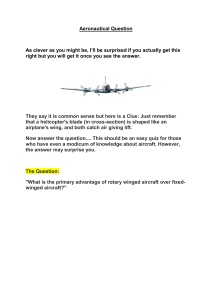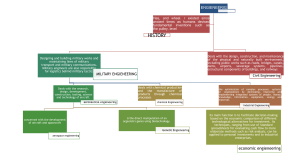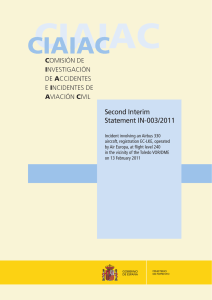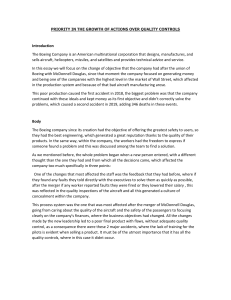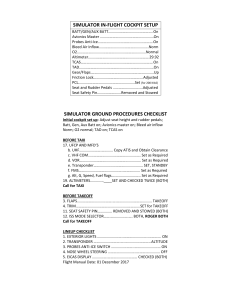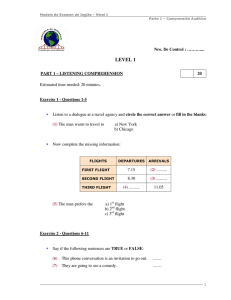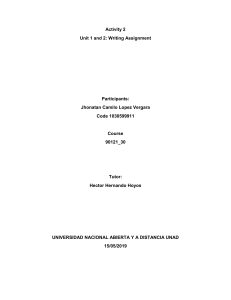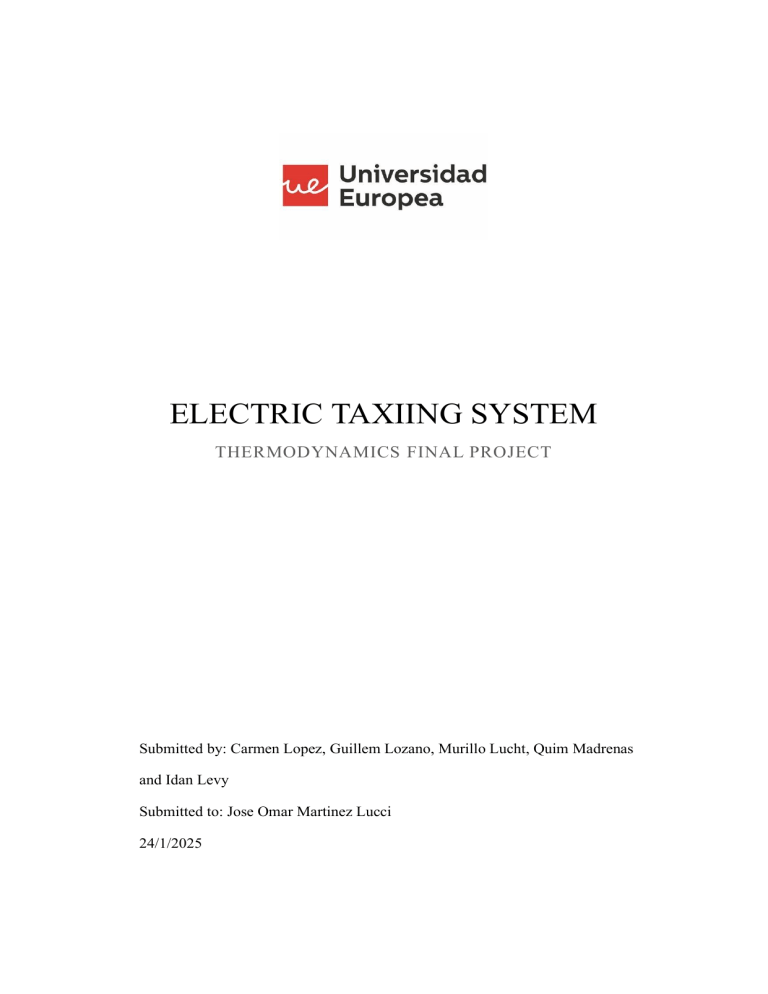
ELECTRIC TAXIING SYSTEM
THERMODYNAMICS FINAL PROJECT
Submitted by: Carmen Lopez, Guillem Lozano, Murillo Lucht, Quim Madrenas
and Idan Levy
Submitted to: Jose Omar Martinez Lucci
24/1/2025
G5 : Thermodynamics final project
Contents
Introduction ......................................................................................................................... 3
Efficiency in ground operations .............................................................................................. 4
Energy recovery techniques .................................................................................................... 6
Types of Electric Taxiing Systems .......................................................................................... 7
Key Components of Electric Taxiing Systems ........................................................................... 8
Benefits of Electric Taxiing .................................................................................................. 11
Disadvantages of electric taxiing ........................................................................................... 12
Thermodynamic principles of electric taxiing .......................................................................... 13
Energy savings and environmental impact: ............................................................................. 15
Energy savings: .................................................................................................................. 16
MATLAB Graphs and interpretation: ..................................................................................... 17
Conclusion: ....................................................................................................................... 20
MATLAB code: ................................................................................................................. 21
Sources: ............................................................................................................................ 28
2
G5 : Thermodynamics final project
Introduction
In this project we explore how an electric taxiing system could help reduce the CO2
emissions of the aviation industry, our objective is to determine a system that can help reduce
the green house gasses as much as possible. Whith the optimization and changing some
characteristics of current ground operations the emissions can significantly change.
It is a known fact that the aviation industry as well as many other industries have been
moving toward a more sustainable approach, in ground operations a lot of energy is wasted
due to the use of jet engines at low speeds to move the aircraft around the taxiways, also
known as taxiing. The usage of jet engines in this way consumes a lot of fuel that is used
inefficiently to move the aircraft, our proposal is to incorporate an Electric Taxiing system
(ETS) that helps move the aircraft without the use of the jet engines.
In this project we explore the types of ETS we could implement as well as a analytic study on
a ETS incorporated into the main landing gear. This is a very possible solution and is
currently being used in the aviation industry. Is it the most optimal? We will see further on in
the study.
This is an important area of study regarding sustainability in the aviation industry. most
airports have an organized system for ground operation since safety ang the cost of moving
airplanes around is very important, however an environmental approach is being
implemented with the use od electric vehicles in airports and minimal movement of the
planes implementing an ETS could help reduce the emissions even more.
In order to make the change there has to be a great investment, hence the important of
studying the current available systems and determine the most effective one we could use to
reduce the most amount of carbon emissions.
3
G5 : Thermodynamics final project
Efficiency in ground operations
First we will study the current ground operations, the operations that generally are used the
least efficient way are;
-
Inefficient taxiing
-
Idling during ground delays
-
Ground support equipment
-
Startup protocols
Inefficient taxiing and Ground support equipment being the most contaminating they are the
systems we could substitute with an electric alternative, having electric ground support
vehicles is becoming more common in airports, and ETS are being implemented in some
aircrafts as well as being investigated by some airlines.
Idling during ground delays and Startup protocols could be improved by implementing
standardized optimal protocols depending on the airport and infrastructure they could also be
minimized, these inefficiencies would also benefit from ETS since they could be used when
going up to the runway and delay the startup protocols as much as possible. Although the
optimization of ground controls could also greatly improve the greenhouse gas emission we
centre the study around ETS.
Studying the Thermodynamic efficiency could also be very useful since it is how effectively
energy is converted into useful work, this plays a critical role in optimizing the energy
demands in modern aviation. Inefficient taxiing not only wastes fuel but also results in higher
greenhouse gas emissions. Analysing the thermodynamic inefficiencies in these systems can
help reduce the operational cost and also improve environmental sustainability in the aviation
industry.
On a study done by the university of malta we found a comparison of fuel consumption by
different taxiing techniques.
4
G5 : Thermodynamics final project
According to this graph of the study done by the university of malta the one with the least
emissions overall would be an onboard system, also known as a wheel tug.
Although there are clear advantages there are also some challenges and limitations to take
into account, this is discussed further on in the document. Although difficult the change is
necessary to move toward sustainability in the aviation industry.
5
G5 : Thermodynamics final project
Energy recovery techniques
There are several ways an ETS could work, there are several techniques that can reuse wasted
energy and reuse it, therefore contributing to the efficiency of the ground operations.
Although this is not directly related to ETS is important to acknowledge the techniques we
could implement in order to help reduce the energy waste.
-
Kinetic energy recovery system (KERS)
This type of system can also be found in formula 1 and hybrid automobiles, it reuses
the kinetic energy generated by the braking force of the vehicle. This energy can be
transformed and reused for example to recharge a battery or a capacitor in the aircraft,
therefore reducing the demand for external power sources like the jet engines.
-
Thermal energy recovery
Jet engines waste a significant amount of heat during operations, this heat could be
reused by converting it to electrical energy. Although this system could be too
complicated for the amount of energy reused, or at least for the purpose of this
project.
-
Hybrid Systems for Energy Storage and Recovery
A hybrid system that recovers and stores anergy could also be an optimal solution,
using the energy collected to later power some sort of ETS can be a great system to
implement taking into account the benefits of not having to charge the battery that
moves the ETS. There are two possibilities:
o Supercapacitors, that provide a fast charge and discharge that would make it
ideal for short taxiing operations.
o Advanced Lithium-Ion batteries, that would offer a larger energy density for
longer taxiing operations.
6
G5 : Thermodynamics final project
Types of Electric Taxiing Systems
Electric taxiing systems also known as ETS are a possible solution for modern aircrafts to
save fuel and reduce green house emissions, there are two main types of systems, onboard
systems and Ground based systems.
Onboard systems typically suggest some type of electric
motor implemented into the aircraft’s landing gear. The
example on the picture is a Safan Honeywell EGTS
installed on an Airbus A320. The motor is powered by an
auxiliar power unit also known as an APU generator. An
onboard system like this one offers autonomy and reduces
the reliance on external equipment. This type of system
has been in development by companies like Safran and
WeelTug since 2010.
Ground based systems rely on external towing vehicles,
these vehicles can be electrical and therefore also reduce
the emissions. It can be used
to tow the aircraft from the gate to the runway and vice versa.
This system would clearly reduce the emission of greenhouse gases and it would require less
modification of the aircraft.
Although both systems would significantly reduce emissions they both have difficulties since
the onboard system would change the weight of the aircraft this may cause a larger
consumption of fuel during flight and might not be viable. As for the Ground based system it
would require not only a great investment but a lot of coordination and organization, the
tricks would have to follow specific routes and also have to be charged in power stations.
Although both systems have limitations both could be implemented and are being
implemented in different airports.
with the EGTS being in development to be lighter and the tow trucks being already available
a system implementing both could also be viable, using the electric tow trucks for longer
7
G5 : Thermodynamics final project
manuvers and the EGTS for shorter range manuvers an optimal
system could have both or either of them.
Key Components of Electric Taxiing Systems
The electrical systems can be implemented by airline or by airports, while airports would be
responsible for ground vehicles and operations the airlines would be responsible for
implementing an onboard system.
While taking this into account we can see each system has different requirements, while an
onboard system has certain components ground systems have other requirements like a
charging station and predetermined routes.
EGTS have certain main components that only affect the aircraft they are composed of:
-
Electric motor, this motor is used to generate mechanical energy in order to move the
aircraft , it is usually installed in the landing gear and it has to perform according to
the taxiing requirements while being compact and lightweight
-
Power supply unit, this would be the system that provides energy to the motor. This
can be done by using an auxiliar power unit (APU) like a small gas turbine engine, or
by onboard batteries line the advanced lithium-Ion batteries we mentioned earlier or
even combine APU and batteries to make a hybrid system.
-
Control system, this system would govern the operations of the electric motor
ensuring a smooth performance, making moves with precision like accelerating,
deceleration and steering´, integrating the system with the cockpit controls to enable
the control from the pilots and include safety mechanisms.
-
Cooling system, this would be crucial in order toprevent the overheating of the
components during the operations it could be designed with an air or a liquid cooling
8
G5 : Thermodynamics final project
system depending on the design and it would ensure
efficiency during long taxiing operations as well as prevent any overheating.
-
Energy storage system, this system would store recovered energy it can be a
supercapacitor or we could use advanced batteries, this can be the hybrid system
discussed in the energy recovery techniques, where a hybrid system that recovers lost
energy can be used.
Although the EGTS could have a lot more components like a braking system these are the
crucial components. We can see in the EGTS made by Safran and Honeywell features the
following components:
-
EGTS controller at the tip of the aircraft that receives and converts actions into orders
to the power electronics.
-
Pilot interface unit, in the cockpit that allows the
pilot to switch on EGTS and order the desired
aircraft motion (forward or backwards).
-
Wheel Actuator, as we can see in the image and it
applies to the wheel the required torque and speed
proportional as per the instructions received from
the WACU.
-
Wheel Actuator Controller Unit (WACU) that converts current into instructions to the
electrical motor proportional to the pilot's command as delivered by the EGTS
Controller.
9
G5 : Thermodynamics final project
-
APU Generator, located at the tail of the aircraft it is
modified to generate the additional power required to power the EGTS.
On the other hand a ground based system would have different requirements. For example:
-
Electric towing vehicles (ETVs), they would be equipped with electric motors and
tow the aircrafts during taxiing operations. They would have Hight-torque electric
motors capable of handling the weight and size of different aircrafts with an
automated or semiautomated control system that would help the optimization of the
process.
-
Charging stations, the vehicles would require a charging station with high capacity
chargers for rapid or overnight charging. This can implement a renewable energy
source for sustainable power generation.
-
Aircraft Interface system that would connect the ETV with the aircraft like a Tow bar
or Tow Bar-less mechanism.
-
Centralised management, this segment would take charge of all the necessities and the
requirements of operations the vehicles like the maintenance infrastructure. they
would need regular check-ups and this whole new department to manage the whole
infrastructure.
Just from the list of requirements and technicality we will conduct the rest of the research on
the EGTS since they are the most probable option to be develop. EGTS allows for a slow
implementation so little by little the industry can improve without making such a big
investment to have the whole infrastructure of having a ground based system.
Just to confirm a ground based system is not as optimal as a disadvantages a ground base
system would have, it would require a larger initial investment and a change in the airport
infrastructure having the tower control also take into acount the towtrucks routes. Tow trucks
are great but it takes quite some time to lift the aircraft to set it into position and thatcould
10
G5 : Thermodynamics final project
create congestion. The landing gear (at least the front) would have
to be modified in order to not brake when being pulled.
This would require not only the modification of the airport but also the aircraft, this means
the weight and consumption of the aircraft will be affected by the change of design in the
landing gear. Making these changes is less optimal than just making changes to the aircraft
itself.
Benefits of Electric Taxiing
In this segment we discuss how the implementation of EGTS would benefit the industry,
taking special interest in what airports and airlines would gain from implementing this
system. Obviously the main advantage Is the sustainability aspect but economically it can
also help reduce the amount of fuel used and therefore be beneficial also in an economical
way.
According to the EGTS by Safran and Honeywell Fuel costs are an ever increasing drain on
airline revenues and profits – accounting for between 30% -40% of Direct Operating Costs
(DOCs), and up to 50% of airline DOC’s in some regions of the world. The implement of
EGTS would significantly reduce those numbers.
In a study done by the department of Mechanical Engineering, Coventry University we found
this chart that compares the different types of ETS. In this study a TaxiBot is also considered,
we have decided to omit this study because we have included this as a ground based system.
A Taxi Bot is a semi-robotic hybrid towing system designed for taxiing airplanes from the
gate to the runway, this can also be considered a ground based system having very similar
problems as the tow truck mentioned earlier. Since this is an optimized version of the
WeelTug/Tow truck it is more optimal. We will not include this segment inn our work since
we are interested in analysing the advantages and disadvantages of what we have
hypothesized to be the most optimal system at the moment.
11
G5 : Thermodynamics final project
From looking at this chart we can see the advantages of implementing a EGTS would
basically be the reduction of GHG emissions during Taxiing operations which is the main
objective of this project. It would save fuel during aircraft taxi operations and therefore
reduce operating costs. It would also protect the aircrafts from any damage from foreign
objects or debris and lastly reduce the overall costs.
Disadvantages of electric taxiing
On the other hand the disadvantages would be that the additional weight would slightly
increase the fuel consumption during flight and therefore increase the GHG emissions during
flight. The technical difficulties of installing the motor on the main landing gear and all the
electrical components has been proven viable by the Safran and Honeywell model even being
authorised the marketing of the system on smaller aircrafts like the A230 or Boeing 737.
Lastly the Thermal management of the system is the most complicated of the tree but this can
also be solved by implementing a cooling system or reusing the thermal energy to charge the
batteries like a hybrid battery discussed earlier.
The certification process for any of these systems will be complicated since it requires
rigorous testing to ensure the safety and the performance requirements set by the regulatory
bodies.
12
G5 : Thermodynamics final project
Thermodynamic principles of electric
taxiing
The thermodynamic principles at play in electric taxiing revolve around energy conversion
and efficiency, the key thermodynamic processes involved are:
-
Energy Conversion Efficiency
Electric motors used in ETS convert electrical energy into mechanical energy, te efficiency of
this conversion depends on minimizing losses due to heat and friction. The thermodynamic
efficiency of the system can be expressed using the first law of thermodynamics
𝜼=
𝑾𝒐𝒖𝒕
𝑸𝒊𝒏
where;
𝜼 is the efficiency of the system
𝑾𝒐𝒖𝒕 is the work output (mechanical energy produced by the motor)
𝑸𝒊𝒏 is the electrical energy input
Additionally, the second law of thermodynamics places a fundamental limit on the efficiency
of any energy conversion process, expressed as:
𝜼𝒎𝒂𝒙 = 𝟏 −
𝑻𝒄
𝑻𝒉
where;
𝑻𝒄 is the temperature of the cold reservoir (ambient temperature)
𝑻𝒉 is the temperature of the hot reservoir (operating temperature of the motor)
13
G5 : Thermodynamics final project
-
Heat Dissipation
During electric taxiing, heat is generated due to electrical resistance in the motor windings
and friction in mechanical components. Proper thermal management is crucial to ensure that
the system remains within operational temperature limits, the heat generated by electrical
resistance can be calculated using Joule’s law:
𝑯𝒆𝒂𝒕 𝒈𝒆𝒏𝒆𝒓𝒂𝒕𝒆𝒅 [𝑸] = 𝑰𝟐 ∗ 𝑹 ∗ 𝒕
where;
𝑸 is the heat generated
𝑰𝟐 is the current flowing through the motor
𝑹 is the electrical resistance
𝒕 is the time of operation
The rate of heat transfer from the motor to the surrounding environment can be modelled
using Newton’s law of cooling:
𝒅𝑸
= 𝒉 ∗ 𝑨 ∗ (𝑻 − 𝑻𝒂𝒎𝒃𝒊𝒆𝒏𝒕 )
𝒅𝒕
Where;
𝒉 is the heat transfer coefficient
𝑨 is the surface area of the motor
𝑻 is the surface temperature of the motor
𝑻𝒂𝒎𝒃𝒊𝒆𝒏𝒕 is the ambient temperature
14
G5 : Thermodynamics final project
-
Power Requirements and Battery Considerations
The power required for electric taxiing depends on the aircraft’s weight, rolling resistance,
and taxiing speed. The rolling resistance force can be calculated using
𝑭𝒓 = 𝝁𝒓 ∗ 𝒎 ∗ 𝒈
Where;
𝝁𝒓 is the rolling resistance coefficient
𝒎 is the mass of the aircraft
𝒈 is the gravitational acceleration
The power needed to overcome this force at a given speed is:
𝑷 = 𝑭𝒓 ∗ 𝒗
Where;
𝒗 is the taxiing speed
The energy consumed during taxiing can be calculated as:
𝑬𝒏𝒆𝒓𝒈𝒚 𝒄𝒐𝒏𝒔𝒖𝒎𝒆𝒅 (𝑬) = 𝑷 ∗ 𝒕 = (𝝁𝒓 ∗ 𝒎 ∗ 𝒈 ∗ 𝒗) ∗ 𝒕
Battery capacity and power output must be sufficient to meet these power requirements while
ensuring safety and redundancy in the system.
Energy savings and environmental impact:
One of the primary motivations for adopting electric taxiing is to reduce fuel consumption
and emissions; traditionally taxiing using jet engines consumes a significant amount of fuel.
Electric taxiing systems can reduce fuel burn during operations up to 85%, leading to
substantial cost savings and lower emissions.
15
G5 : Thermodynamics final project
-
Fuel Consumption Reduction
The fuel saved during taxiing can be calculated as:
𝑭𝒖𝒆𝒍 𝒔𝒂𝒗𝒊𝒏𝒈𝒔 (𝚫𝑭) = (𝑸𝒆𝒏𝒈𝒊𝒏𝒆 − 𝑸𝑬𝑻𝑺) ∗ 𝒕
where;
F is fuel savings
Qengine is the fuel consumption rate of the jet engines
QETS is the power consumption rate of the electric taxiing system
t is the taxiing time
Emission reduction
Electric taxiing also reduces greenhouse gas emissions by limiting the use of jet engines on
the ground. This contributes to meeting aviation industry targets for reducing carbon
emissions
Energy savings:
Model Explanation
The model used to calculate the energy uses the given assumptions in the scenarios:
Scenarios
Conventional System
Electric Taxing
Energy consumption
Only due to turbine,
Only from electrical engine, extra
during taxing in take-
weight of a/c plus fuel
weight due to components plus fuel
In-flight energy
Only due to turbine, fuel
Only due to turbine, fuel decreases
consumption
decreases linearly
linearly extra weight due to electrical
off
components
16
G5 : Thermodynamics final project
Energy consumption
Only due to turbine,
during taxing in landing weight of a/c, fuel
Only from electrical engine, extra
weight due to components
neglected
Given those assumptions a MATLAB code was made to accommodate all those assumptions.
To analyse if the proposal model has a better efficiency we must first quantify the total energy
used in each scenario and also the additional energy due requirement for flight due to the
added weight of the A/C.
In order to compare values we standardize the taxing time, being 5 minutes regardless of the
flight duration.
MATLAB Graphs and interpretation:
A total energy of 500GJ during taxing in the take-off procedure despite the aircraft weight
being 1.5 tons heavier due to added equipment for the electric taxing, and having the same
consumption of taxing regardless of the flight duration due to the assumption of 5 minutes of
taxing time.
17
G5 : Thermodynamics final project
It can be observed that both graphs have very similar behaviours although added weight
increases the energy consumption during the flight, also notice that the magnitude of the
energy consumption during this part of the flight is of another magnitude, thus a higher
impact in the energy consumption in the long run.
Just like the take-off procedure, a total energy of 500GJ during taxing was consumed during
the taxing after landing despite the aircraft weight being 1.5 tons heavier due to added
equipment for the electric taxing, and once again having the same consumption of taxing
regardless of the flight duration due to the assumption of 5 minutes of taxing time.
18
G5 : Thermodynamics final project
As the both flight scenarios have shorter duration their energy
consumption converge to the same values, but we can notice a trend that the higher duration
flights have increased energy consumption and do not have better efficiency in the whole
flight cycle compared to the base model.
During taxiing, both the landing and taking-off procedures, presented a reduction of 37% in
energy consumption. That can be translated to lower gas emissions and a more efficient
system than the current inhold.
Unfortunately despite having a higher taxiing efficiency the in-flight efficient is worse than
the in-place model. We have a 3% increase in energy consumption due to the added weight.
19
G5 : Thermodynamics final project
The total energy consumption have increased during all the possible flight scenarios. In the
best case with a small increase of Total Energy Consumption of 2.3% which is not enough to
make a switch for the electric taxiing with the system embedded in the aircraft.
Conclusion:
Unfortunately the electric taxiing system embedded in the aircraft did not prove to be
sustainable nor better then the current model used in aviation. Having in the best case
scenario a 2.3% increase in energy consumption. For future research it might be interesting to
go over another concept, an external device that is in charge of the taxiing procedures.
Eliminating the disadvantage of the extra weight during flight due to the embedded
electric taxiing system, which holds motors and batteries as the biggest source of weight.
With this new system new regulations and new aircraft design would be needed to be
accommodated to ensure a safe and fast coupling of the external device to control the aircraft
during taxiing. Not to mention the infrastructure needed for the new system that must be
placed in airports.
20
G5 : Thermodynamics final project
MATLAB code:
%% Parameters and Assumptions
% Aircraft properties
m = 50000; % Aircraft mass in kg
C_r = 0.02; % Rolling resistance coefficient
g = 9.81; % Gravitational acceleration in m/s^2
C_d = 0.3; % Drag coefficient
A = 30; % Frontal area in m^2
rho = 1.225; % Air density at sea level in kg/m^3
v = 5; % Taxi speed in m/s
t_taxi_takeoff = 600; % Taxi duration for takeoff in seconds
t_taxi_landing = 600; % Taxi duration for landing in seconds
% Additional electric system weight
m_motor = 500; % Weight of electric motor in kg
m_battery = 1000; % Weight of batteries in kg
delta_m = m_motor + m_battery; % Total added weight in kg
% Updated aircraft mass with electric system
m_total = m + delta_m; % Mass during electric taxiing (with motor and battery)
% Turbine properties
I_sp = 3000; % Specific impulse in N·s/kg
LHV = 43.15e6; % Lower heating value of jet fuel in J/kg
% Electric motor properties
eta_m = 0.9; % Efficiency of the motor
% Modify electric motor efficiency for taxiing to improve performance
21
G5 : Thermodynamics final project
eta_m_taxi = 0.90; % Efficiency for electric taxiing
% Decreased turbine efficiency for taxiing due to lower speed intake
eta_taxi_turbine = 0.6; % Reduced efficiency during taxiing
% Maintain equal efficiency for turbine during flight (same as electric)
eta_flight_turbine = 0.8; % Same efficiency for turbine during flight
eta_flight_electric = 0.8; % Lower efficiency for electric during flight
% Flight time duration (seconds)
flight_duration = 7200; % Example: 2 hours flight duration
dt = 10; % Time step in seconds
num_steps = flight_duration / dt; % Number of time steps
time = linspace(0.5 * 3600, 4 * 3600, 5); % 5 data points between 0.5 hours to 4 hours
%% Step 1: Calculate Energy Consumption for Conventional System and Electric System for
Each Scenario
% Pre-allocate energy vectors
E_takeoff_conventional = zeros(1, 5); % Energy for turbine takeoff taxiing
E_flight_conventional = zeros(1, 5); % Energy for turbine in-flight
E_landing_conventional = zeros(1, 5); % Energy for turbine landing taxiing
E_takeoff_electric = zeros(1, 5); % Energy for electric takeoff taxiing
E_flight_electric = zeros(1, 5); % Energy for electric in-flight
E_landing_electric = zeros(1, 5); % Energy for electric landing taxiing
E_total_conventional = zeros(1, 5); % Total energy for conventional system
E_total_electric = zeros(1, 5); % Total energy for electric system
% Calculate energy for each time point (i.e., for 0.5 to 4 hours)
for i = 1:5
% Time for the current point
current_time = time(i);
% Energy during takeoff taxiing (Conventional and Electric)
m_f_dot_takeoff_conventional = (C_r * m * g + 0.5 * rho * v^2 * C_d * A) / I_sp; % Fuel
consumption rate for conventional
22
G5 : Thermodynamics final project
m_f_dot_takeoff_electric = (C_r * m_total * g + 0.5 * rho * v^2
* C_d * A) / I_sp; % Fuel consumption rate for electric system
% Apply higher efficiency to electric taxiing consumption
m_f_dot_takeoff_electric = m_f_dot_takeoff_electric * (1 / eta_m_taxi); % Lower
consumption for electric due to efficiency
% Apply reduced efficiency to turbine takeoff taxiing
m_f_dot_takeoff_conventional = m_f_dot_takeoff_conventional * (1 / eta_taxi_turbine); %
Lower consumption due to reduced turbine efficiency
E_takeoff_conventional(i) = m_f_dot_takeoff_conventional * LHV * t_taxi_takeoff;
E_takeoff_electric(i) = m_f_dot_takeoff_electric * LHV * t_taxi_takeoff;
% Energy during flight (Conventional and Electric)
m_current_conventional = m; % For conventional, mass does not include electric system
m_f_dot_flight_conventional = (m_current_conventional * g) / I_sp; % Fuel consumption
during flight (conventional)
m_current_electric = m_total; % For electric, mass includes the electric system weight
m_f_dot_flight_electric = (m_current_electric * g) / I_sp; % Fuel consumption during
flight (electric)
% For flight, the efficiency of both turbine and electric systems is as per updated values
m_f_dot_flight_conventional = m_f_dot_flight_conventional * (1 / eta_flight_turbine); %
Apply turbine efficiency
m_f_dot_flight_electric = m_f_dot_flight_electric * (1 / eta_flight_electric); % Apply
lower electric efficiency
E_flight_conventional(i) = m_f_dot_flight_conventional * LHV * current_time;
E_flight_electric(i) = m_f_dot_flight_electric * LHV * current_time; % Same rate for
simplicity
% Energy during landing taxiing (Conventional and Electric)
23
G5 : Thermodynamics final project
m_f_dot_landing_conventional = (C_r * m * g + 0.5 * rho *
v^2 * C_d * A) / I_sp;
m_f_dot_landing_electric = (C_r * m_total * g + 0.5 * rho * v^2 * C_d * A) / I_sp;
% Apply higher efficiency for electric during landing taxiing
m_f_dot_landing_electric = m_f_dot_landing_electric * (1 / eta_m_taxi); % Electric
system efficiency adjustment
% Apply reduced efficiency to turbine landing taxiing
m_f_dot_landing_conventional = m_f_dot_landing_conventional * (1 /
eta_taxi_turbine); % Lower consumption for turbine due to reduced efficiency
E_landing_conventional(i) = m_f_dot_landing_conventional * LHV * t_taxi_landing;
E_landing_electric(i) = m_f_dot_landing_electric * LHV * t_taxi_landing;
% Total energy for conventional and electric system
E_total_conventional(i) = E_takeoff_conventional(i) + E_flight_conventional(i) +
E_landing_conventional(i);
E_total_electric(i) = E_takeoff_electric(i) + E_flight_electric(i) + E_landing_electric(i);
end
%% Step 2: Calculate Percentage Differences
% Calculate percentage difference for each scenario
perc_diff_takeoff = (E_takeoff_electric - E_takeoff_conventional) ./ E_takeoff_conventional
* 100;
perc_diff_flight = (E_flight_electric - E_flight_conventional) ./ E_flight_conventional * 100;
perc_diff_landing = (E_landing_electric - E_landing_conventional) ./
E_landing_conventional * 100;
perc_diff_total = (E_total_electric - E_total_conventional) ./ E_total_conventional * 100;
%% Step 3: Plotting Results (Energy Consumption for All Scenarios and Percentage
Differences)
% Plot Energy Consumption for All Scenarios
figure;
24
G5 : Thermodynamics final project
subplot(2, 1, 1);
% Plot Energy for Takeoff Taxiing
plot(time / 3600, E_takeoff_conventional / 1e6, '-o', 'LineWidth', 1.5, 'DisplayName', 'Turbine
Takeoff Taxiing');
hold on;
plot(time / 3600, E_takeoff_electric / 1e6, '-o', 'LineWidth', 1.5, 'DisplayName', 'Electric
Takeoff Taxiing');
xlabel('Time (hours)');
ylabel('Energy Consumption (MJ)');
title('Energy Consumption during Takeoff Taxiing');
legend;
grid on;
% Plot Energy for In-Flight
subplot(2, 1, 2);
plot(time / 3600, E_flight_conventional / 1e6, '-o', 'LineWidth', 1.5, 'DisplayName', 'Turbine
In-Flight');
hold on;
plot(time / 3600, E_flight_electric / 1e6, '-o', 'LineWidth', 1.5, 'DisplayName', 'Electric InFlight');
xlabel('Time (hours)');
ylabel('Energy Consumption (MJ)');
title('Energy Consumption during Flight');
legend;
grid on;
% Plot Energy for Landing Taxiing
figure;
plot(time / 3600, E_landing_conventional / 1e6, '-o', 'LineWidth', 1.5, 'DisplayName',
'Turbine Landing Taxiing');
hold on;
plot(time / 3600, E_landing_electric / 1e6, '-o', 'LineWidth', 1.5, 'DisplayName', 'Electric
Landing Taxiing');
xlabel('Time (hours)');
25
G5 : Thermodynamics final project
ylabel('Energy Consumption (MJ)');
title('Energy Consumption during Landing Taxiing');
legend;
grid on;
% Plot Total Energy Consumption
figure;
plot(time / 3600, E_total_conventional / 1e6, '-o', 'LineWidth', 1.5, 'DisplayName', 'Turbine
Total');
hold on;
plot(time / 3600, E_total_electric / 1e6, '-o', 'LineWidth', 1.5, 'DisplayName', 'Electric Total');
xlabel('Time (hours)');
ylabel('Energy Consumption (MJ)');
title('Total Energy Consumption');
legend;
grid on;
%% Plot Percentage Differences
figure;
subplot(2, 1, 1);
% Plot Percentage Difference for Takeoff Taxiing
plot(time / 3600, perc_diff_takeoff, '-o', 'LineWidth', 1.5, 'DisplayName', 'Takeoff Taxiing');
xlabel('Time (hours)');
ylabel('Percentage Difference (%)');
title('Percentage Difference in Energy Consumption during Takeoff Taxiing');
grid on;
% Plot Percentage Difference for In-Flight Energy Consumption
subplot(2, 1, 2);
plot(time / 3600, perc_diff_flight, '-o', 'LineWidth', 1.5, 'DisplayName', 'In-Flight');
xlabel('Time (hours)');
ylabel('Percentage Difference (%)');
title('Percentage Difference in Energy Consumption during In-Flight');
grid on;
26
G5 : Thermodynamics final project
%% Plot Percentage Difference for Total Energy Consumption
figure;
plot(time / 3600, perc_diff_total, '-o', 'LineWidth', 1.5, 'DisplayName', 'Total Energy
Consumption');
xlabel('Time (hours)');
ylabel('Percentage Difference (%)');
title('Percentage Difference in Total Energy Consumption');
grid on;
27
G5 : Thermodynamics final project
Sources:
•
Cordis, C. (2022, May 27). Next-generation aircraft could run on electricity even on
the ground. CORDIS | European Commission.
https://cordis.europa.eu/article/id/436404-next-generation-aircraft-could-run-onelectricity-even-on-the-ground
•
Zoutendijk, M., Mitici, M., & Hoekstra, J. (2023). An investigation of operational
management solutions and challenges for electric taxiing of aircraft. Research in
Transportation Business & Management, 49, 101019.
https://doi.org/10.1016/j.rtbm.2023.101019
•
HEOBALD EWALD HEINRICH, M. (2015). ELECTRIC TAXIING - POWER
SYSTEM ANALYSIS. © Copyright by Maximilian T. E. Heinrich, August 2015.
https://macsphere.mcmaster.ca/bitstream/11375/18085/2/Heinrich_Maximilian_TE_fi
nalsubmission2015august_MASc.pdf
•
Walker, S. (2022, May 29). How Green Taxi's Electric System Could Save Airlines
Thousands Of Jet Fuel Gallons. Simple Flying. https://simpleflying.com/how-greentaxis-electric-system-could-save-airlines-thousands-of-jet-fuel-gallons/
•
An investigation of operational management solutions and challenges for electric
taxiing of aircraft. (2023). In www.sciencedirect.com (No. S2210539523000779).
Science direct.
https://www.sciencedirect.com/science/article/pii/S2210539523000779
•
Safran. (2023). Electric Taxiing Solutions. [Online]. Available: https://www.safrangroup.com
•
WheelTug. (2023). Electric Drive Systems for Aircraft. [Online]. Available:
https://www.wheeltug.com
•
Wikipedia contributors. (2024, March 9). EGTS. Wikipedia.
https://en.wikipedia.org/wiki/EGTS
energies-17-02692-v2.pdf
https://www.mit.edu/~hamsa/pubs/SimaiakisBalakrishnanTRR.pdf
•
•
28
G5 : Thermodynamics final project
•
•
https://www.icas.org/icas_archive/ICAS2020/data/papers/ICAS2020_1162_pap
er.pdf
file:///C:/Users/34643/Downloads/ssrn-4393503.pdf
•
EGTS - electric taxiing system. Introducing the future of aircraft taxiing. (n.d.).
https://greentaxiing.com/
•
29

